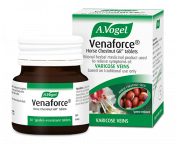An introduction to the varicose veins complications
The majority of people with varicose veins will not experience any complications. However, these are more likely to occur if the problem is long-standing.
Varicose vein complications come about as a result of prolonged or increased pressure within the affected vein. This damages smaller blood vessels as well as the surrounding tissue.
If you notice any of the symptoms of these complications we recommend you seek the advice of your doctor.
Inflammation of the vein
Inflammation of the vein, also known as phlebitis is when the walls of the vein become irritated and inflamed. This inflammation can sometimes cause a small clot to form in the vein, but this is usually not serious - unless the clot forms at a venous junction, where it can cause more serious conditions such as DVT.
Symptoms of an inflamed varicose vein are redness around or along the vein, heat in the affected area, as well as pain and occasionally itching.
Phlebitis can be treated with warm compresses and anti-inflammatory medications such as ibuprofen. If this inflammation is the result of an infection then antibiotics may be prescribed.
Varicose eczema
Varicose eczema is caused by a leakage of blood from the varicose vein into the surrounding tissue. Cells in the area become damaged leading to inflammation.
Symptoms of varicose eczema are scaly or flaky skin, swelling, tenderness, itching and darkening of the skin.
This can be treated with moisturisers or steroid ointments, but treating the source of the problem, the varicose vein, is the most effective way to stop varicose eczema.
Varicose ulcers
Varicose ulcers are open wounds or sores in the skin and are also known as ‘venous ulcers’.
Leakage of blood and fluid from the vein gives rise to varicose eczema and may, if long-standing, damage tissues and cells to the extent that the skin ‘breaks down’, leading to the formation of a varicose ulcer.
These ulcers are treated by cleaning them and applying a dressing, which is usually changed once a week. A compression bandage is also usually used to improve circulation in the legs.
Bleeding
On rare occasions, varicose veins may bleed. This may come about after bumping into the edge of your coffee table or another similar knock, but sometimes, no causative injury can be identified.
If your varicose vein starts to bleed, you must act quickly. Lie down and raise your leg as high as you can – resting it on a table top or back of a chair can help. Apply firm pressure to the bleeding vein using a clean tea towel or dressing.
These actions will be easier if there is someone else around to help you.
If bleeding is heavy or does not stop easily, call your doctor or an ambulance.








